-
 Bitcoin
Bitcoin $84,887.8886
1.15% -
 Ethereum
Ethereum $1,642.5421
4.46% -
 Tether USDt
Tether USDt $0.9997
0.02% -
 XRP
XRP $2.1371
3.96% -
 BNB
BNB $596.3744
1.16% -
 Solana
Solana $129.9399
7.55% -
 USDC
USDC $0.9998
-0.02% -
 Dogecoin
Dogecoin $0.1666
3.79% -
 TRON
TRON $0.2476
2.11% -
 Cardano
Cardano $0.6527
3.49% -
 UNUS SED LEO
UNUS SED LEO $9.3206
-0.73% -
 Chainlink
Chainlink $13.0892
2.57% -
 Avalanche
Avalanche $20.3596
4.93% -
 Stellar
Stellar $0.2450
4.18% -
 Sui
Sui $2.3183
3.47% -
 Toncoin
Toncoin $3.0155
1.09% -
 Shiba Inu
Shiba Inu $0.0...01256
2.60% -
 Hedera
Hedera $0.1720
1.61% -
 Bitcoin Cash
Bitcoin Cash $350.3078
11.67% -
 MANTRA
MANTRA $6.2812
-2.17% -
 Litecoin
Litecoin $78.8248
2.32% -
 Polkadot
Polkadot $3.7123
3.59% -
 Hyperliquid
Hyperliquid $16.2646
3.18% -
 Dai
Dai $1.0002
0.02% -
 Bitget Token
Bitget Token $4.3865
1.15% -
 Pi
Pi $0.7345
20.70% -
 Ethena USDe
Ethena USDe $0.9990
0.03% -
 Monero
Monero $205.5954
0.29% -
 Uniswap
Uniswap $5.5522
4.97% -
 OKB
OKB $53.6736
0.54%
What is PoS (Proof of Stake)? How do validators get rewards?
PoS is a consensus mechanism where validators stake cryptocurrency to validate transactions and create blocks, offering energy efficiency over PoW.
Apr 11, 2025 at 08:49 pm

Proof of Stake (PoS) is a consensus mechanism used by various blockchain networks to achieve distributed consensus. Unlike Proof of Work (PoW), which requires miners to solve complex mathematical problems to validate transactions and create new blocks, PoS relies on validators who hold and "stake" their cryptocurrency to participate in the validation process. This method is considered more energy-efficient and less resource-intensive than PoW.
The Basics of Proof of Stake
In a PoS system, validators are chosen to create new blocks and validate transactions based on the amount of cryptocurrency they hold and are willing to "stake" as collateral. The more cryptocurrency a validator stakes, the higher their chances of being selected to forge a new block. This system incentivizes participants to act honestly, as any malicious behavior could result in the loss of their staked assets.
How Validators Get Selected
The selection process for validators in a PoS system can vary depending on the specific blockchain's implementation. However, a common method is randomized selection, where validators are chosen based on a combination of their stake and a random number generator. This ensures that the selection process remains fair and unpredictable, reducing the chances of any single validator dominating the network.
Validator Rewards and Incentives
Validators in a PoS system earn rewards for their participation in the network. These rewards typically come in the form of transaction fees and block rewards. Transaction fees are collected from users who send transactions on the network, while block rewards are newly minted coins that are distributed to validators for creating new blocks.
- Transaction Fees: When users send transactions on the network, they pay a small fee. These fees are pooled and distributed among the validators who validate the transactions. The exact distribution method can vary, but it is often proportional to the validator's stake and their role in the validation process.
- Block Rewards: In addition to transaction fees, validators may also receive block rewards. These are newly created coins that the blockchain protocol distributes to validators as an incentive for maintaining the network. The size of the block reward can vary and is often determined by the blockchain's protocol rules.
The Role of Staking
Staking is a crucial component of the PoS system. Validators must lock up a certain amount of cryptocurrency as a stake, which serves as collateral to ensure their honest behavior. If a validator acts maliciously or fails to perform their duties, they risk losing their staked assets. This mechanism helps to secure the network and maintain trust among participants.
Slashing and Penalties
To further enforce honest behavior, many PoS systems implement slashing mechanisms. If a validator is found to be acting maliciously, such as by attempting to double-spend or censor transactions, they can be penalized by having a portion of their staked assets "slashed" or confiscated. This serves as a strong deterrent against malicious behavior and helps to maintain the integrity of the network.
Delegation and Staking Pools
In some PoS systems, individuals who do not have enough cryptocurrency to become validators can participate through delegation or by joining staking pools. Delegation allows users to lend their cryptocurrency to a validator, who then stakes it on their behalf. In return, the delegators receive a portion of the rewards earned by the validator. Staking pools operate similarly, pooling together the stakes of multiple participants to increase their chances of being selected as a validator and sharing the rewards among pool members.
Examples of PoS Blockchains
Several popular blockchains use PoS as their consensus mechanism. Ethereum 2.0 is transitioning from PoW to PoS, aiming to improve scalability and energy efficiency. Cardano uses a variant of PoS called Ouroboros, which emphasizes security and decentralization. Tezos employs a PoS system that allows for on-chain governance and protocol upgrades without hard forks.
The Process of Becoming a Validator
Becoming a validator in a PoS system involves several steps:
- Choose a Blockchain: First, you need to select a PoS blockchain that you want to validate on. Research the specific requirements and rewards offered by different blockchains.
- Acquire Cryptocurrency: You will need to acquire the native cryptocurrency of the chosen blockchain. This can be done through exchanges or other means of acquiring the cryptocurrency.
- Set Up a Wallet: You will need a compatible wallet that supports staking and validation. Some blockchains have specific wallet requirements, so make sure to use the correct one.
- Stake Your Cryptocurrency: Once you have the necessary amount of cryptocurrency, you can stake it by transferring it to the staking address provided by the blockchain. This locks up your cryptocurrency as collateral.
- Run a Validator Node: You will need to set up and run a validator node, which involves installing the necessary software and ensuring that your node is connected to the blockchain network. This can be a technical process, so make sure to follow the specific instructions provided by the blockchain.
- Monitor and Maintain: As a validator, you will need to monitor your node and ensure that it is running smoothly. This includes updating software, ensuring network connectivity, and staying informed about any changes to the blockchain protocol.
Frequently Asked Questions
Q: Can I lose my staked cryptocurrency in a PoS system?
A: Yes, if you act maliciously or fail to perform your duties as a validator, you risk losing your staked assets through slashing mechanisms. It is important to understand the rules and risks associated with staking on a particular blockchain.
Q: How do I know if a PoS blockchain is secure?
A: The security of a PoS blockchain depends on various factors, including the design of its consensus mechanism, the number of validators, and the implementation of slashing and other security measures. Researching the blockchain's whitepaper and community feedback can help you assess its security.
Q: Can I stake on multiple PoS blockchains at the same time?
A: Yes, you can stake on multiple PoS blockchains simultaneously, as long as you have the necessary cryptocurrency and meet the requirements for each blockchain. However, managing multiple stakes can be complex, so it is important to stay organized and informed.
Q: What happens to my staked cryptocurrency if I want to stop being a validator?
A: If you want to stop being a validator, you will need to follow the specific unstaking process outlined by the blockchain. This usually involves a waiting period during which your staked assets are locked, after which you can withdraw them. Be sure to understand the unstaking process and any associated fees or penalties before starting.
Disclaimer:info@kdj.com
The information provided is not trading advice. kdj.com does not assume any responsibility for any investments made based on the information provided in this article. Cryptocurrencies are highly volatile and it is highly recommended that you invest with caution after thorough research!
If you believe that the content used on this website infringes your copyright, please contact us immediately (info@kdj.com) and we will delete it promptly.
- Shiba Inu (SHIB) Has Cemented Its Status as One of the Trendiest Meme Coins
- 2025-04-13 02:00:13
- MAGACOIN FINANCE (MGA) Is Buzzing—and It's One of the Best Cryptos to Buy Today
- 2025-04-13 02:00:13
- Once gushed over and tipped to usurp Bitcoin, Ethereum now faces what at least one analyst has dubbed a “midlife crisis.”
- 2025-04-13 01:55:14
- Sui (SUI), which is in the 17th position of cryptocurrencies, has been getting more attention recently
- 2025-04-13 01:55:14
- UXLINK Partners with Stanford to Shape the Future of Digital Currency
- 2025-04-13 01:55:13
- SUI Price Recovers Strongly from Recent Lows After Reclaiming the $2.18 Mark. The Price is Now Testing Resistance at $2.22
- 2025-04-13 01:55:13
Related knowledge
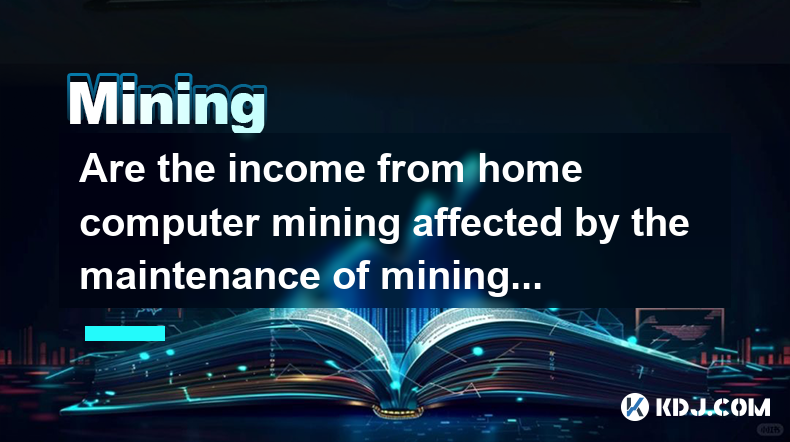
Are the income from home computer mining affected by the maintenance of mining equipment?
Apr 12,2025 at 06:56pm
Introduction to Home Computer MiningHome computer mining refers to the process of using personal computers to mine cryptocurrencies such as Bitcoin, Ethereum, and others. This method of mining has become popular among enthusiasts who want to participate in the cryptocurrency ecosystem without investing in specialized mining hardware. However, the income...
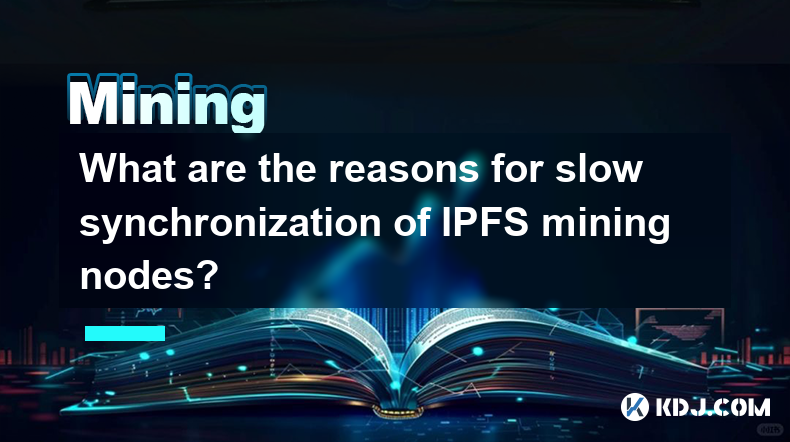
What are the reasons for slow synchronization of IPFS mining nodes?
Apr 13,2025 at 01:07am
The synchronization of InterPlanetary File System (IPFS) mining nodes is a critical process that ensures the integrity and efficiency of the decentralized network. However, users often encounter slow synchronization, which can be frustrating and impact their overall experience. Understanding the reasons behind this issue is essential for optimizing node...
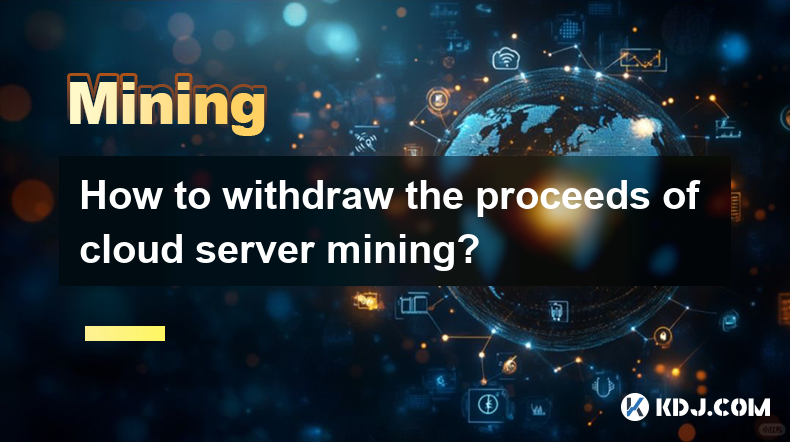
How to withdraw the proceeds of cloud server mining?
Apr 12,2025 at 06:14pm
How to Withdraw the Proceeds of Cloud Server Mining? Cloud server mining has become an increasingly popular way for individuals to participate in cryptocurrency mining without the need for expensive hardware and technical expertise. However, once you've successfully mined some cryptocurrency, the next crucial step is understanding how to withdraw your p...

How much impact does the mining difficulty of home computer mining have on the benefits?
Apr 12,2025 at 11:01pm
The mining difficulty of cryptocurrencies significantly affects the benefits that can be derived from mining on a home computer. Mining difficulty refers to the measure of how difficult it is to find a hash below a given target, which is a critical component of the mining process for cryptocurrencies like Bitcoin. This article will explore the impact of...
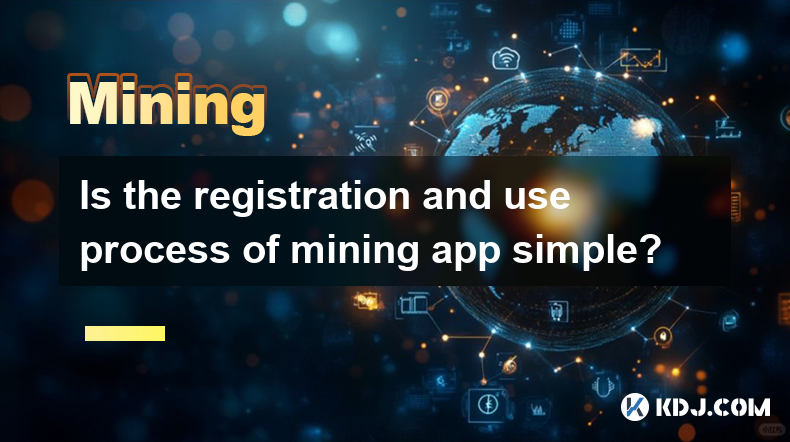
Is the registration and use process of mining app simple?
Apr 12,2025 at 02:07pm
The registration and use process of a mining app can vary in complexity depending on the specific app in question. However, many modern mining apps strive to be user-friendly, aiming to simplify the process for both novice and experienced users. In this article, we will delve into the typical steps involved in registering and using a mining app, highlig...
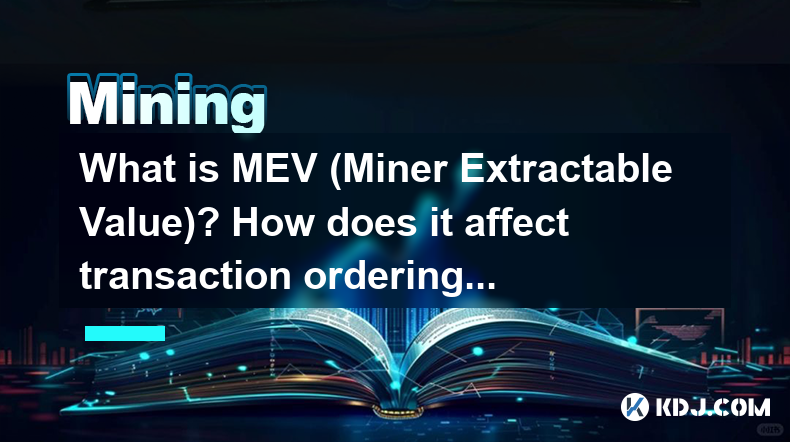
What is MEV (Miner Extractable Value)? How does it affect transaction ordering?
Apr 11,2025 at 10:00pm
MEV (Miner Extractable Value) is a concept within the cryptocurrency ecosystem that describes the profit a miner can make by including, reordering, or excluding transactions in the blocks they mine. This value arises from the ability of miners to manipulate the order of transactions within a block, which can lead to significant financial opportunities o...

Are the income from home computer mining affected by the maintenance of mining equipment?
Apr 12,2025 at 06:56pm
Introduction to Home Computer MiningHome computer mining refers to the process of using personal computers to mine cryptocurrencies such as Bitcoin, Ethereum, and others. This method of mining has become popular among enthusiasts who want to participate in the cryptocurrency ecosystem without investing in specialized mining hardware. However, the income...

What are the reasons for slow synchronization of IPFS mining nodes?
Apr 13,2025 at 01:07am
The synchronization of InterPlanetary File System (IPFS) mining nodes is a critical process that ensures the integrity and efficiency of the decentralized network. However, users often encounter slow synchronization, which can be frustrating and impact their overall experience. Understanding the reasons behind this issue is essential for optimizing node...

How to withdraw the proceeds of cloud server mining?
Apr 12,2025 at 06:14pm
How to Withdraw the Proceeds of Cloud Server Mining? Cloud server mining has become an increasingly popular way for individuals to participate in cryptocurrency mining without the need for expensive hardware and technical expertise. However, once you've successfully mined some cryptocurrency, the next crucial step is understanding how to withdraw your p...

How much impact does the mining difficulty of home computer mining have on the benefits?
Apr 12,2025 at 11:01pm
The mining difficulty of cryptocurrencies significantly affects the benefits that can be derived from mining on a home computer. Mining difficulty refers to the measure of how difficult it is to find a hash below a given target, which is a critical component of the mining process for cryptocurrencies like Bitcoin. This article will explore the impact of...

Is the registration and use process of mining app simple?
Apr 12,2025 at 02:07pm
The registration and use process of a mining app can vary in complexity depending on the specific app in question. However, many modern mining apps strive to be user-friendly, aiming to simplify the process for both novice and experienced users. In this article, we will delve into the typical steps involved in registering and using a mining app, highlig...

What is MEV (Miner Extractable Value)? How does it affect transaction ordering?
Apr 11,2025 at 10:00pm
MEV (Miner Extractable Value) is a concept within the cryptocurrency ecosystem that describes the profit a miner can make by including, reordering, or excluding transactions in the blocks they mine. This value arises from the ability of miners to manipulate the order of transactions within a block, which can lead to significant financial opportunities o...
See all articles























































































